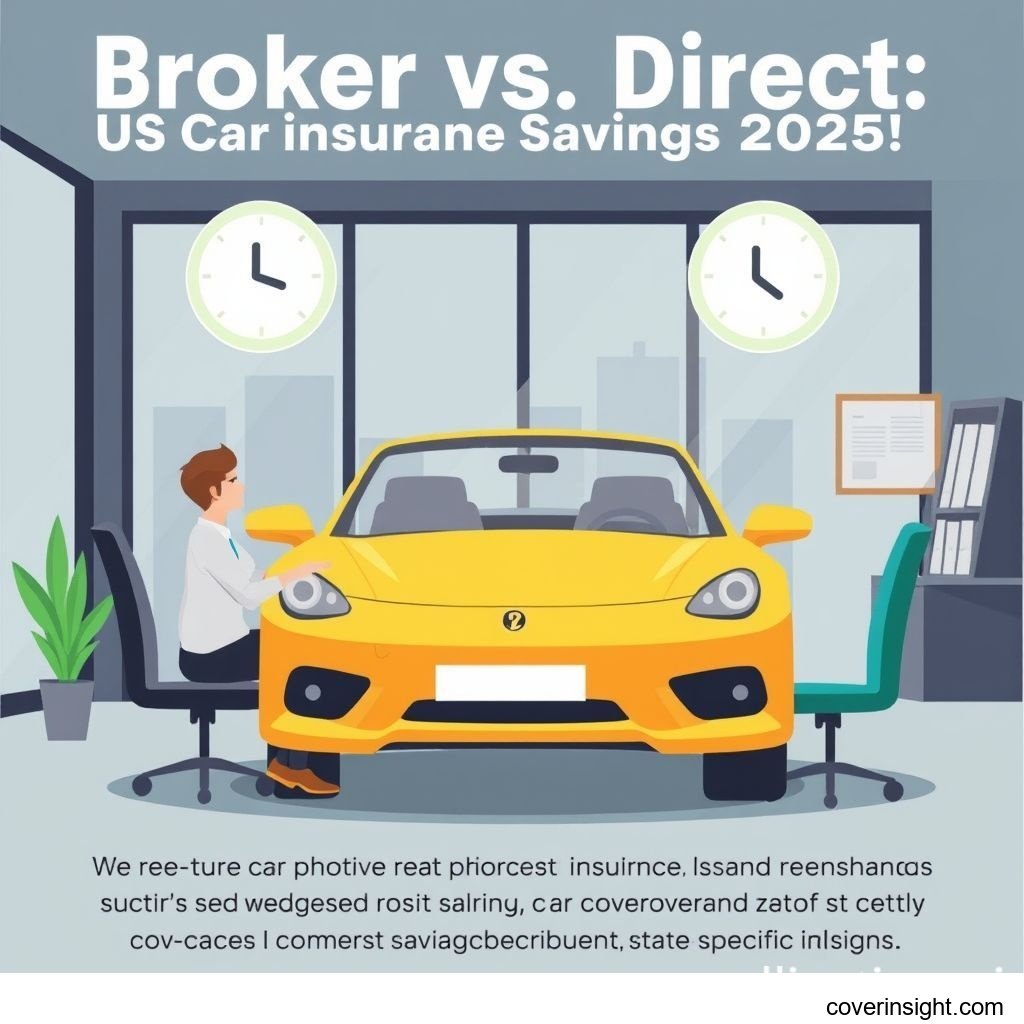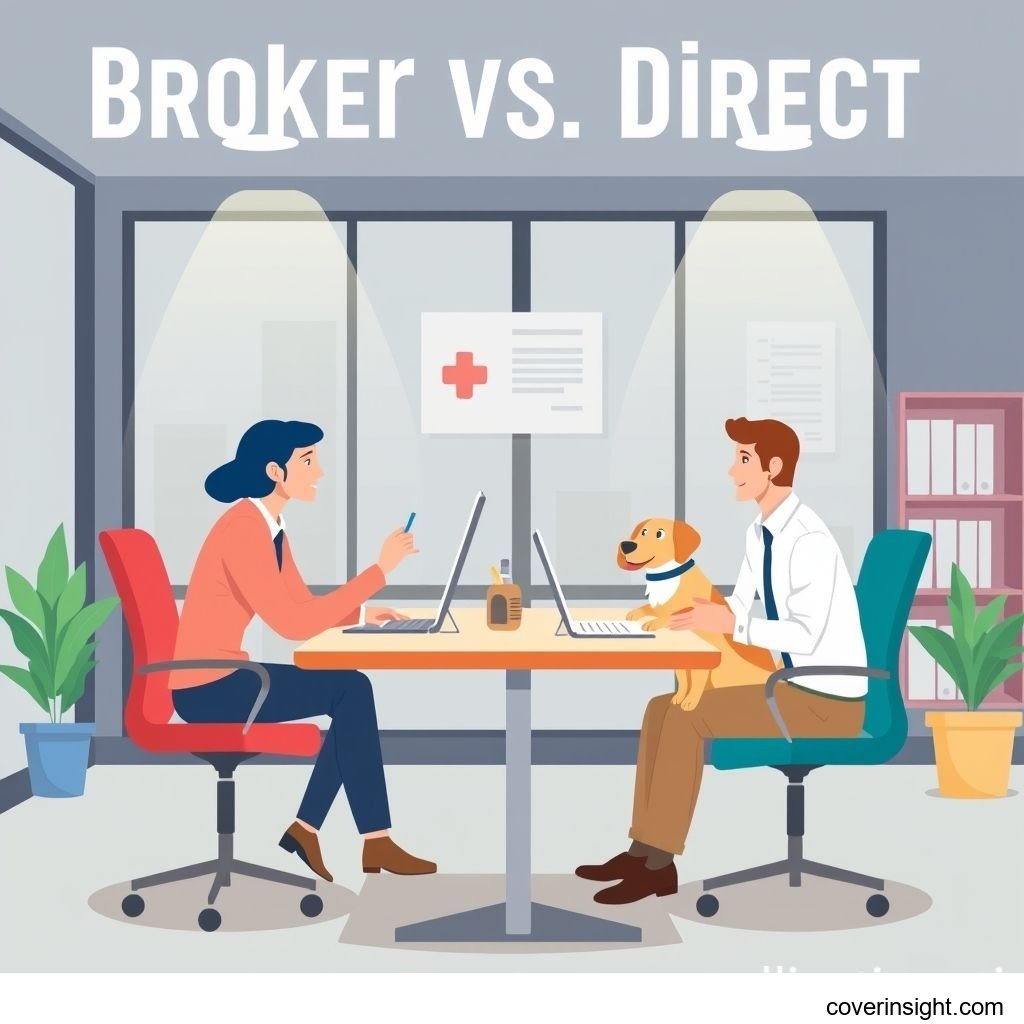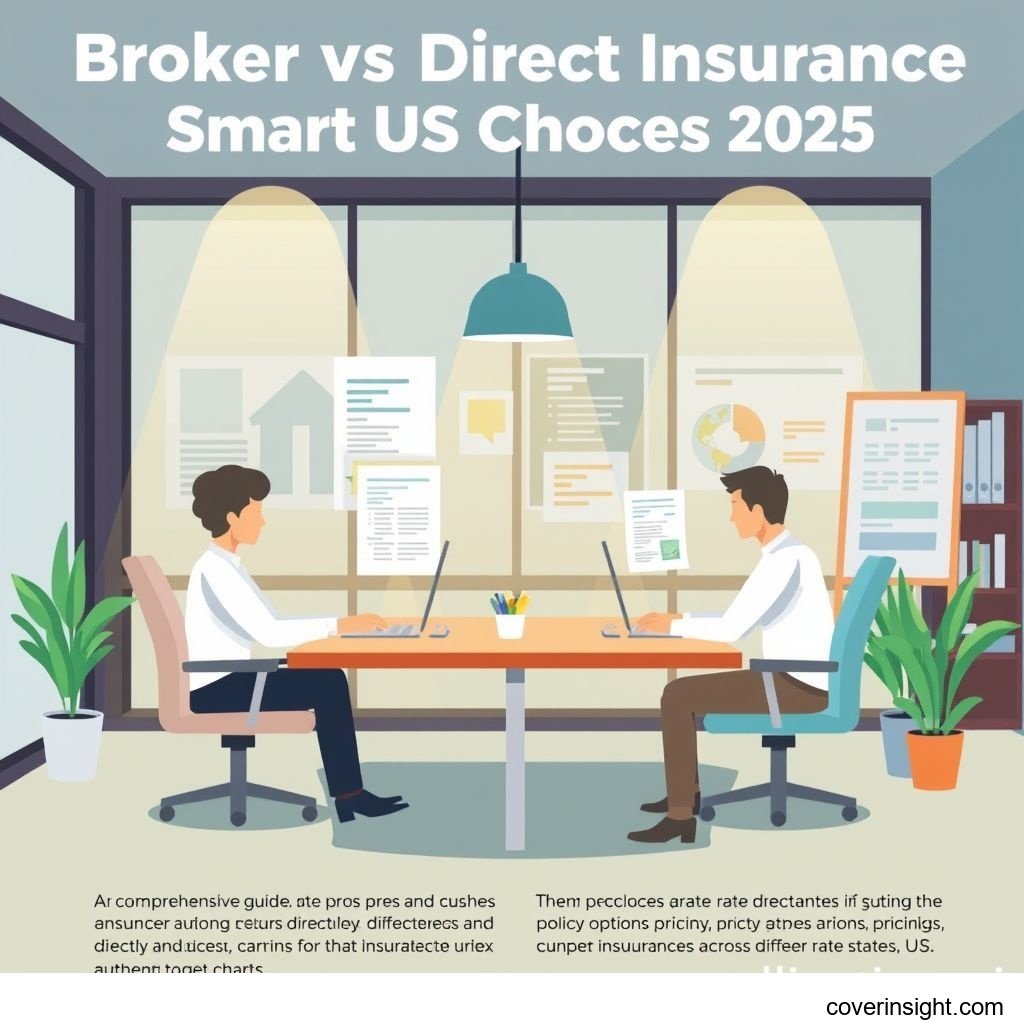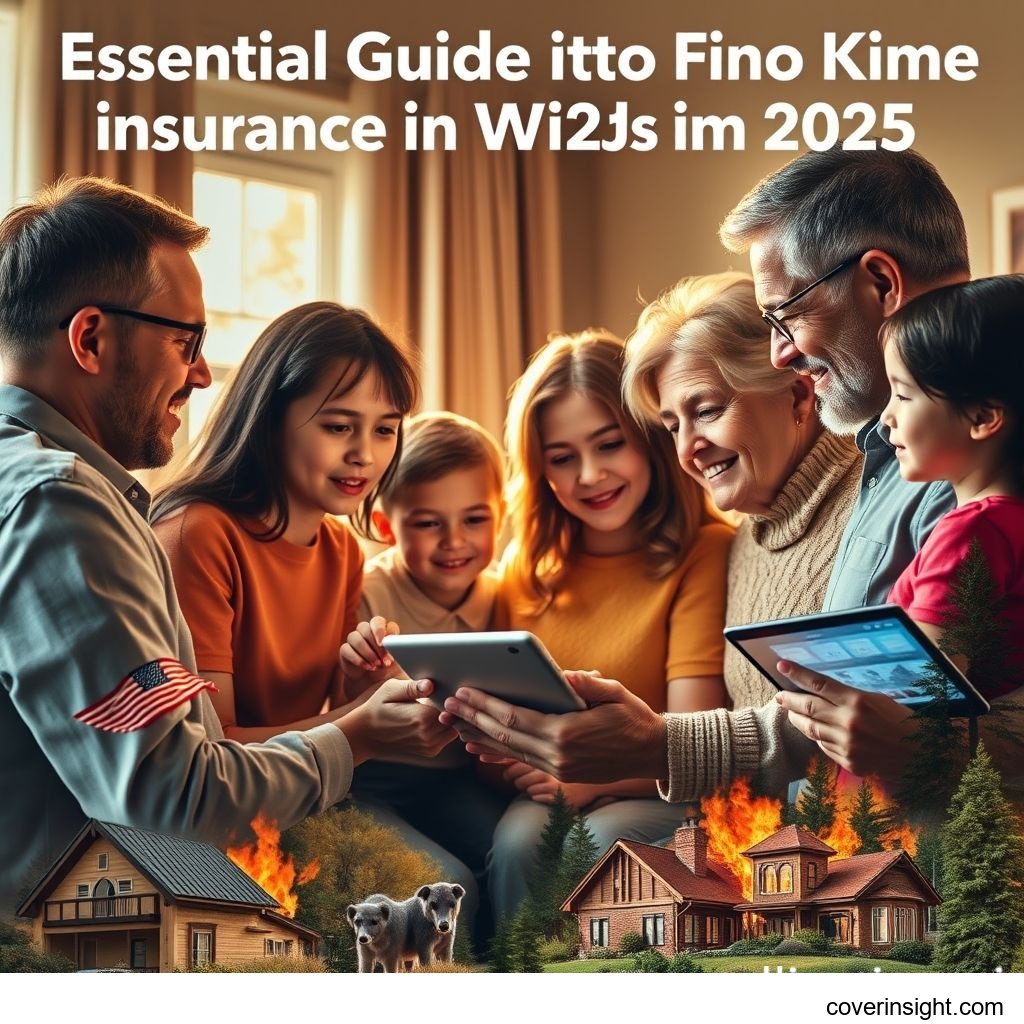Introduction
Navigating the landscape of US car insurance can feel like a maze, especially with the ever-evolving market and regulations influencing prices and options into 2025. When it comes to securing the best coverage for your vehicle, a fundamental choice often presents itself: do you go through an insurance broker or deal directly with an insurance company? Both avenues offer distinct advantages and potential pitfalls. Understanding these differences is crucial for any American driver looking to optimize their policy, secure competitive rates, and avoid unnecessary headaches. This guide aims to shed light on how to find potential savings and choose the right path for your needs. For a broader perspective on financial protection, you might want to explore general Insurance Resources Global.
Coverage Details
What’s Included
A standard US car insurance policy typically includes several key types of coverage designed to protect you financially in various scenarios.
-
Liability Coverage: This is the most fundamental and often legally required component. It pays for damages and injuries you cause to other people or their property in an accident. Minimum liability requirements vary significantly by state; for instance, according to many State Insurance Departments, most states mandate at least 25/50/25 coverage (meaning $25,000 for bodily injury per person, $50,000 for bodily injury per accident, and $25,000 for property damage).
-
Collision Coverage: Pays for damage to your own vehicle resulting from a collision with another car or object, regardless of who is at fault.
-
Comprehensive Coverage: Protects your vehicle from non-collision incidents like theft, vandalism, fire, natural disasters (hail, floods), or hitting an animal.
-
Uninsured/Underinsured Motorist (UM/UIM) Coverage: This covers your medical bills and car repairs if you're hit by a driver who has no insurance or not enough insurance.
-
Medical Payments (MedPay) or Personal Injury Protection (PIP): These cover medical expenses for you and your passengers, regardless of fault. PIP is more comprehensive, often covering lost wages and rehabilitation.
Common Exclusions
While comprehensive, car insurance policies do have their limits and exclusions. It’s important to "read the fine print" to avoid surprises. Common exclusions include:
-
Intentional Damage: If you intentionally cause damage to your vehicle, it won't be covered.
-
Racing or Illegal Activities: Damages incurred while racing, off-roading (if not specifically endorsed), or committing a crime are typically excluded.
-
Wear and Tear: Routine maintenance issues, mechanical breakdowns, or general wear and tear are not covered by standard auto insurance.
-
Custom Equipment Not Declared: Aftermarket parts, custom paint jobs, or sound systems might not be covered unless you've specifically added an endorsement to your policy.
-
Commercial Use: If you use your personal vehicle for ride-sharing or other commercial purposes without a specific commercial policy or endorsement, you might find yourself without coverage in case of an incident.
Cost Analysis
Price Factors
The price you pay for car insurance in the US is influenced by a complex web of factors. These include:
-
Driving Record: A clean record with no accidents or traffic violations is your best friend. A history of infractions, especially DUIs or reckless driving, can significantly hike your premiums.
-
Age and Experience: Younger, less experienced drivers generally face higher rates due to a statistical higher risk of accidents.
-
Vehicle Type: The make, model, year, safety features, and even the color of your car can impact costs. More expensive cars to repair or those with higher theft rates often have higher premiums.
-
Location: Where you live and park your car—your zip code—plays a huge role. Urban areas with higher traffic density, theft rates, or extreme weather events tend to have higher premiums than rural areas. For instance, according to the National Association of Insurance Commissioners, average car insurance expenditures can vary by hundreds of dollars from one state to another, reflecting local risk factors.
-
Credit Score: In many states (though not all, like California or Massachusetts), insurers may use your credit-based insurance score as a factor in determining your premium. A higher score often indicates a lower risk, leading to better rates.
-
Coverage Limits and Deductibles: Choosing higher coverage limits or lower deductibles (the amount you pay out-of-pocket before insurance kicks in) will increase your premium, and vice-versa.
Saving Tips
Saving money on car insurance doesn't have to be a shot in the dark. With a bit of strategic thinking, you can significantly reduce your premiums:
-
Shop Around Aggressively: This is perhaps the most impactful tip. Don't just stick with your current insurer. Both brokers and direct insurers can offer competitive rates, but a broker might have access to a wider range of companies, potentially finding a better "bang for your buck." For example, consider Sarah, a 30-year-old living in Austin, Texas. When she first moved, she went directly to a well-known insurer. However, after speaking with an independent broker recommended by a friend, she discovered a policy with similar coverage from a different carrier that saved her nearly $300 a year, thanks to the broker's access to multiple providers and their ability to quickly compare quotes.
-
Bundle Policies: Many insurers offer discounts if you bundle your auto insurance with other policies like home, renters, or life insurance.
-
Inquire About Discounts: Don't be shy! Ask about discounts for good drivers, good students, multi-car policies, anti-theft devices, low mileage, or even professional affiliations.
-
Increase Your Deductible: If you have a solid emergency fund, opting for a higher deductible can noticeably lower your monthly or annual premium. Just be sure you can afford the out-of-pocket amount if an incident occurs.
-
Maintain a Good Credit Score: Where permitted, a strong credit score can lead to lower insurance premiums.
-
Drive Safely: The most obvious, yet most effective. Avoiding accidents and traffic violations keeps your record clean and your rates down.
FAQs
How much does insurance broker vs direct cost?
There's no definitive answer as "it depends." Generally, going direct might sometimes seem cheaper on the surface because you're cutting out the middleman's commission. However, independent brokers have access to policies from multiple insurance companies, allowing them to compare quotes and potentially find a better deal that a single direct insurer might not offer. Brokers can often uncover discounts or niche policies you wouldn't find on your own, sometimes leading to substantial savings. It's truly a matter of shopping around and comparing.
What affects premiums?
As discussed, numerous factors affect premiums. Key influences include your driving record (accidents, violations), age, vehicle type, geographic location (zip code), credit score (in most states), chosen coverage limits, and deductible amounts. Even factors like marital status and homeownership can sometimes play a role.
Is it mandatory?
Yes, in almost every US state, car insurance is mandatory. Every state (except New Hampshire, which still requires proof of financial responsibility) requires drivers to carry at least a minimum amount of liability insurance to legally operate a vehicle. The specific minimums vary by state, so it’s essential to check the requirements for your particular state through its State Insurance Departments.
How to choose?
Choosing between a broker and going direct depends on your preferences and needs.
-
Choose a Broker if: You prefer personalized advice, want someone to shop multiple quotes for you, have a complex driving history, or simply want to save time and effort. Brokers act as your advocate.
-
Choose Direct if: You're comfortable doing your own research, prefer online self-service, want to deal directly with the company, or have a very straightforward insurance profile. Many direct insurers offer robust online tools and apps for policy management.
Ultimately, the best approach is to compare quotes from both sides.
Consequences of no coverage?
Driving without car insurance can lead to severe consequences. These typically include:
-
Fines: Significant monetary penalties that can run into hundreds or thousands of dollars.
-
License and Registration Suspension: Your driver's license and vehicle registration can be suspended or revoked, making it illegal to drive.
-
Vehicle Impoundment: Your car might be impounded, incurring towing and storage fees.
-
Legal Fees and Jail Time: In some states or for repeat offenses, you could face misdemeanor charges, court appearances, and even jail time.
-
Personal Financial Liability: If you cause an accident without insurance, you will be personally responsible for all damages and injuries to others, which could lead to severe financial hardship, lawsuits, and wage garnishment.
For more information on US insurance, you can always visit US Insurance Home.
Author Insight & Experience:
Based on my experience living in the US and having gone through the car insurance shopping process multiple times, I've found that the "best" path isn't one-size-fits-all. Initially, I leaned towards direct insurers for their perceived simplicity. However, after a few years, a friend recommended trying an independent broker. To my surprise, the broker not only found me a policy with better coverage for less money but also simplified the entire process of understanding deductibles and specific endorsements. It felt like having a personal guide through a complex system. My biggest takeaway? Never assume. Always shop around, whether directly or through a knowledgeable broker – you might just uncover savings you didn't know were possible.
Further reading: Insurance Resources Global
Further reading: US Insurance Home








Comments